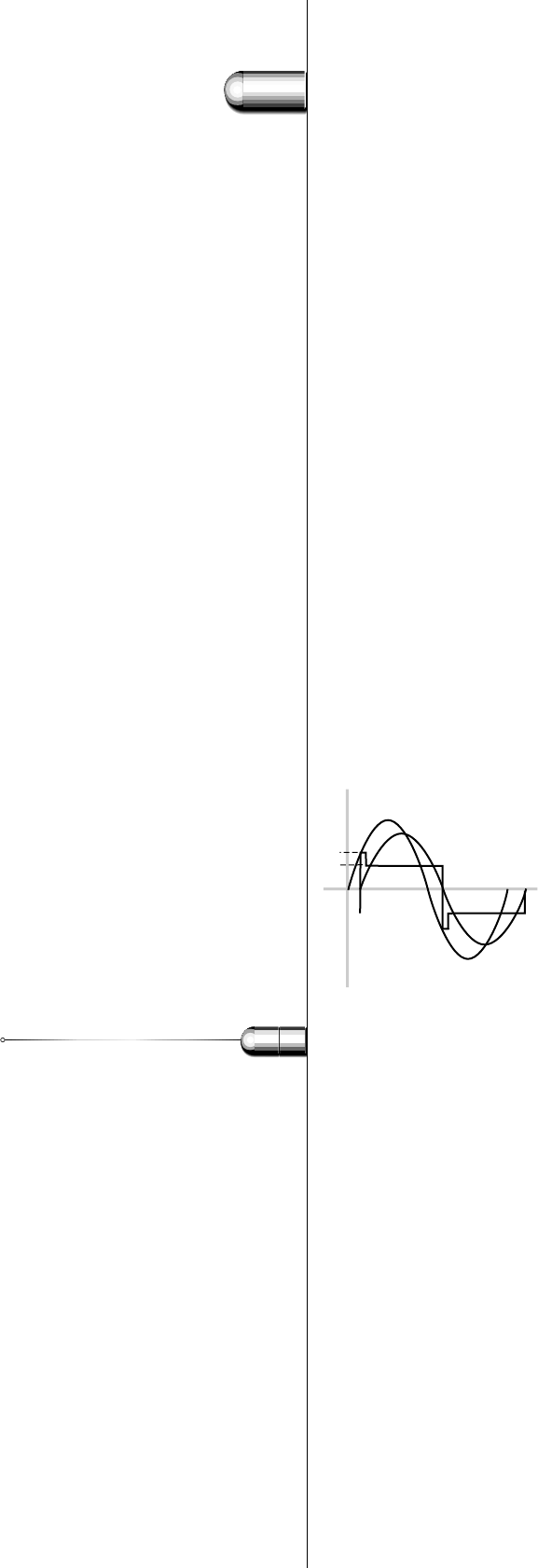
In the case of electromagnetic control gear,a combination of preheating
and a high ignition peak is obtained by using a normal choke ballast
and a preheat starter or an electronic ignitor.
Energy is supplied to the discharge in the form of electrons.The lamp
current, just like the mains voltage, is sinusoidal, with a frequency of
50 or 60 Hz. If the energy flow is zero (at lamp current reversal) the
lamp stops burning and in theory would have to be re-ignited.
This could be done by supplying additional energy to the electrodes
via a higher lamp voltage, the way it is done when initially starting the
lamp. But from the moment the lamp has reached its stationary
condition, the lamp voltage is constant.
And yet, in practice the lamp does not extinguish at current reversal.
Why not?
The phase shift introduced by the inductive element of the ballast
ensures that the mains voltage is not zero at that moment. Because of
the inductive properties of choke coil ballasts a phase shift ϕ occurs
between the mains voltage and the lamp current (see Fig. 102). So, at
the moment of current reversal the lamp voltage would be equal to the
mains voltage, since the voltage over the ballast is nil.The difference
(gap) between the mains voltage and the average lamp voltage as a
consequence of the phase shift ensures proper re-ignition of the lamp
at the moment the current passes the point of reversal (zero-point A
in figure).
Types of ballasts
1 Resistor ballasts
Current limitation by means of resistor ballasts is a very uneconomic
form of current limitation, because in the resistor electrical energy is
dissipated in the form of heat. Nevertheless, until the advent of
electronic circuitry,use of a series resistor was the only way of stabilising
fluorescent lamps operated on DC, for example the ‘TL’R lamp (see
Fig. 103). For stable operation on a resistor ballast, it is necessary that
the supply voltage be at least twice the lamp voltage under operating
conditions.This means that 50 per cent of the power will be
dissipated by the ballast.A considerable improvement in efficiency
can, however, be achieved by using a resistor with a very pronounced
positive temperature characteristic (an ordinary or specially
constructed incandescent lamp serves well for this purpose).
A temperature-dependent resistor compensates for variations in the
lamp current resulting from variations in the mains voltage, which means
14
5
108
Fig. 102. Phase shift between supply voltage
and lamp current (and lamp voltage) in a
discharge lamp with an inductive ballast. In
the case shown, the supply voltage is
sufficiently high for re-igniting the lamp after
every current reversal.
1.3 Ignition and re-ignition
V, A
t
A
V
m
I
l
V
l
gap
ϕ


















